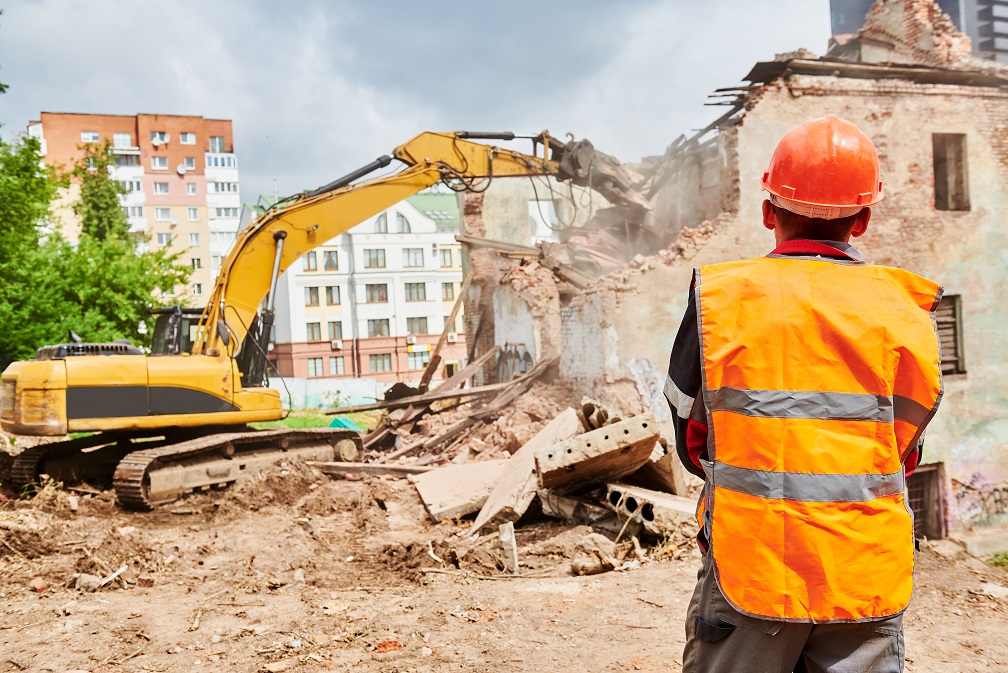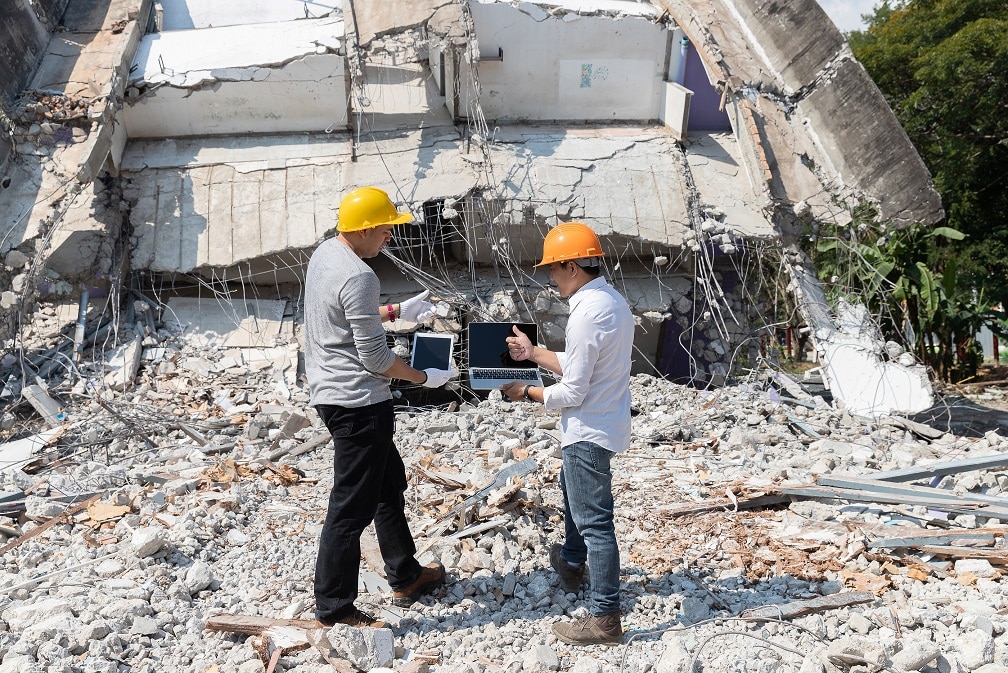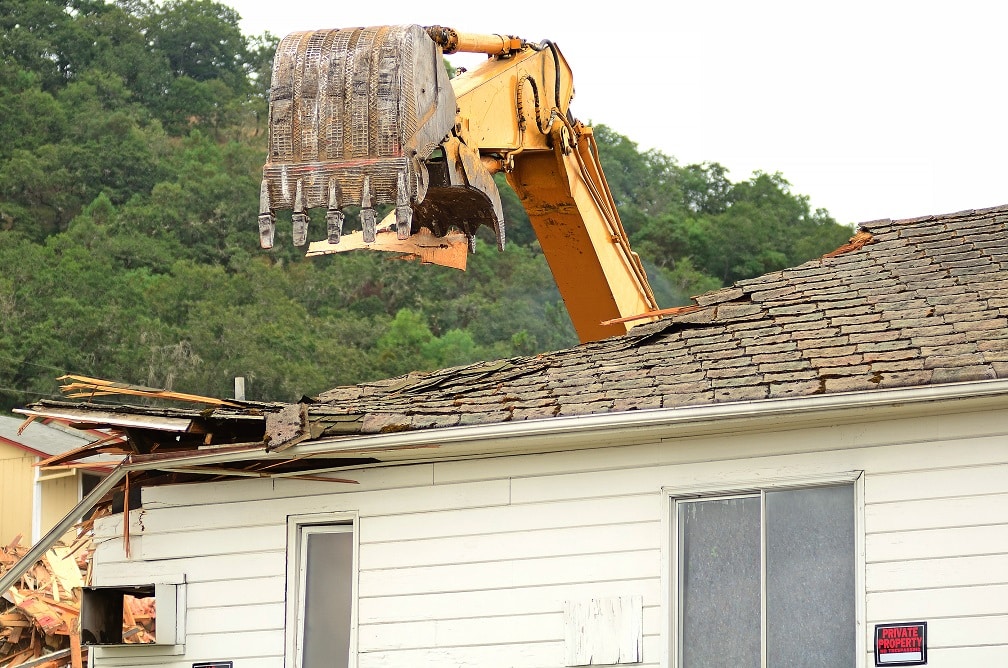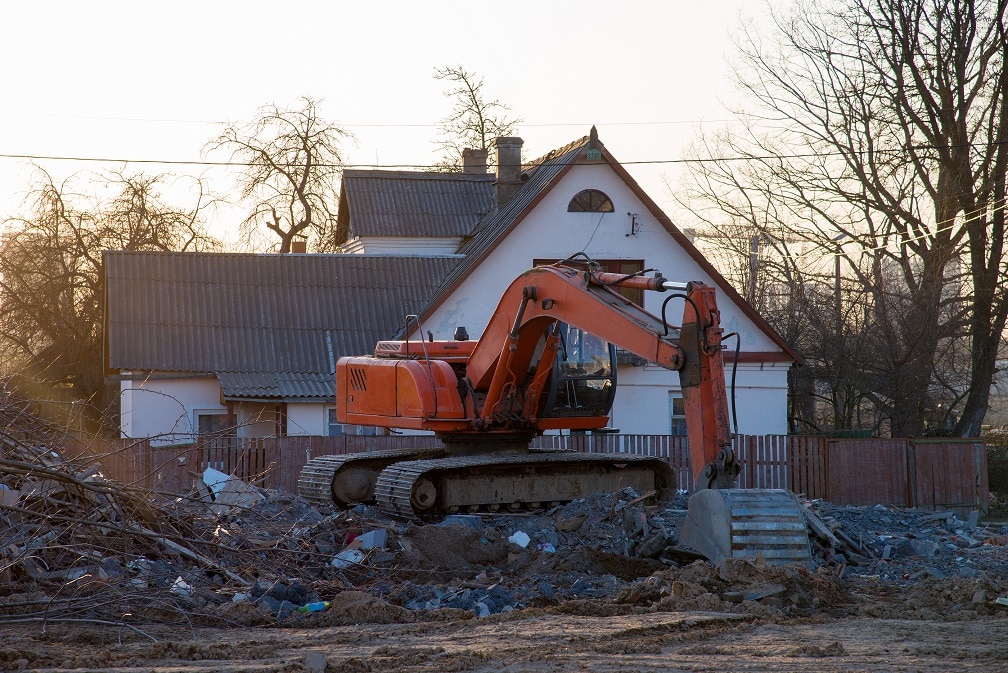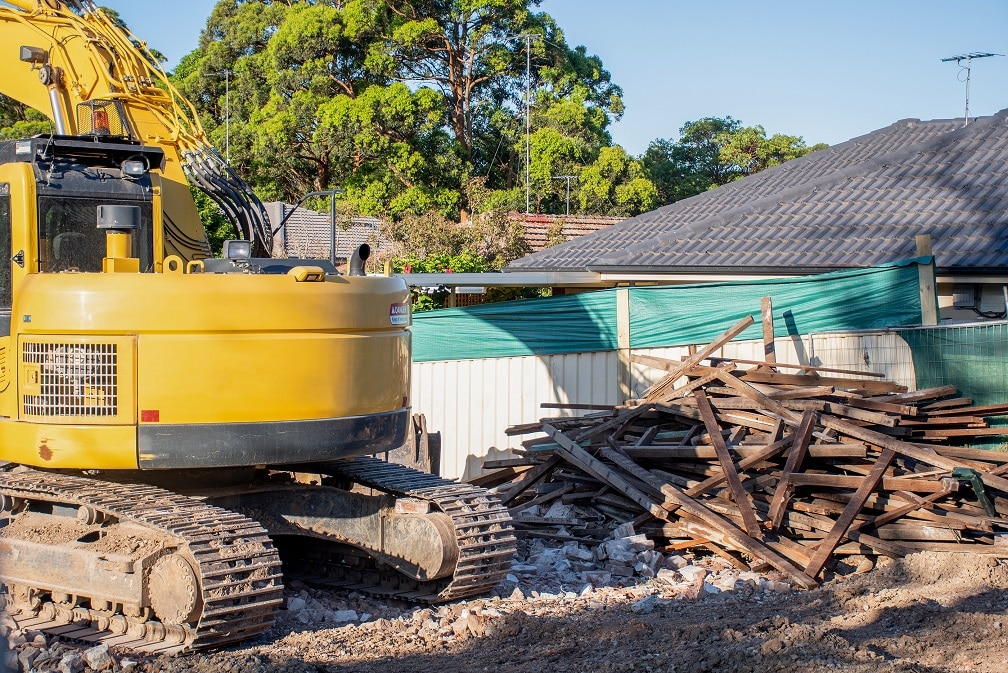Demolition is the systematic process of dismantling a structure by controlled or pre-planned methods. However, there is more to demolishing a building than swinging a wrecking ball or planting explosives— it entails highly trained experts experienced with working with different materials, physics, weather conditions, and debris.
You might think that demolition is similar no matter what is being demolished or where it’s happening. However, commercial or industrial demolition is different from residential demolition. Each follows a different procedure.
Residential vs. Light Commercial Demolition
Demolishing a light commercial structure or residential house is a carefully planned procedure that must consider the type of building material used in the initial construction, the building location, safety, and debris disposal.
Typically, light commercial demolition involves structures or buildings which were previously used for business purposes. Residential demolition, on the other hand, mainly involves single-family homes, home garages or other structures found on the residential property. It can also involve larger dwellings such as apartment blocks.
Demolition methods can range from piece-by-piece and careful dismantling to selective or a single devastating blast. If the demolition is in a crowded urban setting, more elaborate safety techniques must be put in place for the neighboring buildings, demolition crew, and the joint public areas. No matter the method used, it’s advisable to have an expert demolition team complete the work. It’s safer, faster, and can save you money.
Types of Demolition
When demolition is carried out in a residential area, the point person is usually the homeowner. The contractor or demolition team works closely with the house owner, especially if the demolition is limited to within the interior walls, i.e., it does not touch exterior elements. However, when the building is light commercial, the general contractor will more likely be called upon to facilitate and oversee the demolition.
There are various steps to be followed before the demolition process commences. This includes surveying the site, removing hazardous material, and planning for the safe removal of debris and other precautionary/safety measures.
Depending on the goal of the demolition, different methods are used.
Using Bulldozers
Bulldozers are often used in demolishing relatively small residential houses. The bulldozer is used to remove and then transfer the remains/debris to the waiting trucks. The person operating the bulldozer must be careful and also protect the surrounding structures while demolishing and transferring the debris.
Selective Demolition
Selective demolition is also known as strip-out demolition. It’s gaining popularity because the procedure allows the property owners to recycle or reuse the materials. The procedure involves removing specific exterior or interior portions of a building or house while protecting or preserving the remaining structure. It also preserves the nearby areas and buildings.
In today’s eco-conscious world, selective demolition is gaining much popularity. Interior demolition usually involves the removal of walls, pipes, and ceilings. It’s also a great choice for building upgrades, extensions, and remodels, where reusing and recycling are desired to lessen the environmental impact. This process, however, is labor-intensive and may be complicated and time-consuming.
Mechanical Demolition
This type of building demolition utilizes specialized mechanical tools and equipment. These include excavators with specialized attachments capable of breaking steel and concrete, effectively “chewing” the building apart. Smaller tools include skid steers loaders and even demolition robots that can be used for selective demolition or smaller tasks.
Excavator Demolition
For smaller buildings like residential homes and offices, dismantling the structure is often done using an excavator. Buildings over 60 feet tall, including those made of concrete, steel, and masonry may require a heavier duty machine such as a high reach excavator. Using a high reach demolition is deemed cleaner and safer as it causes less noise, dust, flying debris, and poses less risk to the excavator operator.
Wrecking Ball Demolition
A wrecking ball typifies the classic example of demolition. In this method, a massive ball of steel is suspended from a crane. The ball is then swung into the building and, by its sheer weight and inertia, brings down the structure, assisted by gravity.
A wrecking ball is physics at work, for it operates like a huge pendulum. To generate the necessary amount of force, the crane operator creates momentum. The crane operator then releases the weight from the higher point to create the greatest velocity.
While this type of demolition is relatively quick and inexpensive, it causes a lot of noise, dust, debris, and safety hazards. Today, this type of demolition is rarely used.
Implosion
By far, the most dramatic way of demolishing a building is by implosion. It’s a good method for larger residential buildings, such as apartment blocks. The implosion method entails the usage of explosives. They knock out a structure’s primary vertical supports, which cause the building to collapse from the inside out.
Implosion is a delicate process of demolition using explosives. Once the supports of the structure are removed or undermined using explosives, it collapses on itself. The technical term is that the structure collapses within its footprint. It can also come down along a predetermined path.
How well the explosive charges are placed and the detonation sequence are extremely critical to a safe and successful demolition.
Care after the Demolition
Following demolition, workers face many problems. These include exposure to dust, noise, potential chemical exposure, and heat and ventilation issues. It doesn’t matter whether its residential house or light commercial building being demolished, proper safety and health measures must be undertaken.
Whether the structure is for living or business purposes, all types of demolitions are likely to contain scrap objects and materials capable of being reclaimed, re-purposed, or recycled. Drywall, steel beams, tiles, porcelain toilets, and even masonry bricks can be safely gathered during cleanup or distributed to scrap yards. Those beyond salvage can be delivered to a waste management facility for proper disposal.
Conclusion
There are many reasons why a demolition becomes necessary. For example, maintaining a property may no longer be worth the effort and cost. It may be time to bring it down. You may also be considering an expansion or upgrade. Whatever the reason, demolition is cost-effective, and by hiring the right professionals, you are sure that the process will go safely and smoothly.

